According to a new research study put out by email delivery auditing and optimization firm Pivotal Veracity, the timing of delivery for communications in an email marketing campaign can be as, if not more, important than the actual relevancy and content of the messages themselves. The time of day, day of the week, and month of the year can all have a significant influence on the success of one’s campaign. Yet often times these factors are overlooked or downplayed, resulting in a limited engagement level from your target recipients, and an unnecessarily restricted ROI.
Pivotal Veracity’s Engagement Index found that financial services, technology and communications firms tended to be most successful in holding the interest of their recipients, whereas retail, travel and hospitality companies struggled to engage users with their communications. Retail and travel marketers, however, were more apt to being effected by seasonality changes. Travel communications engagement received a nice boost in the months of April and May, just before the summer vacation season jumped into full swing, whereas retail outlets saw their biggest rebound in August as consumers returned to work and school.
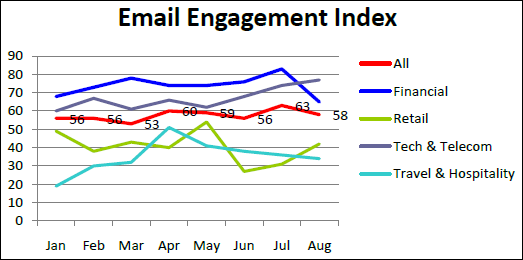
Pivotal Veracity’s study also found that many email recipients, especially in the B2C sector, do not access their personal mailboxes as much as their work accounts. “The average elapsed time between when messages are first sent to when they are first seen grew from 23.2 hours in January to 25.9 in August,” Pivotal Veracity says. This significant increase means that in general, consumers will not see your message for more than 24 hours. This could spell major trouble for any marketer who relies on time sensitive campaigns in order to get their key brand messages across.
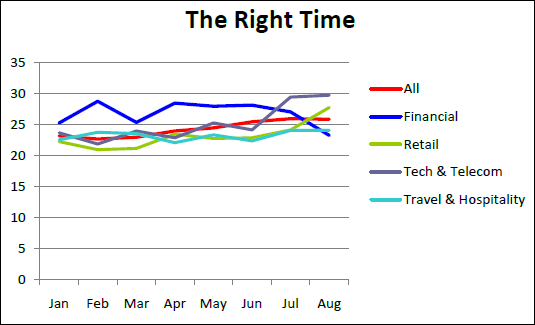
Importance and appeal of communications is a major player in determining how much time elapses between when a consumer receives a message to when he or she actually reads it. Pivotal Veracity’s Email Engagement Index technology found that travel marketers’ messages came in at the highest appeal and importance between the months of March and April, with an average elapsed time of 2.9 hours. Retailers on the other hand struggled during the month of August, coming in at almost 5 hours of elapsed time between when a communication was received, till when it was actually read.
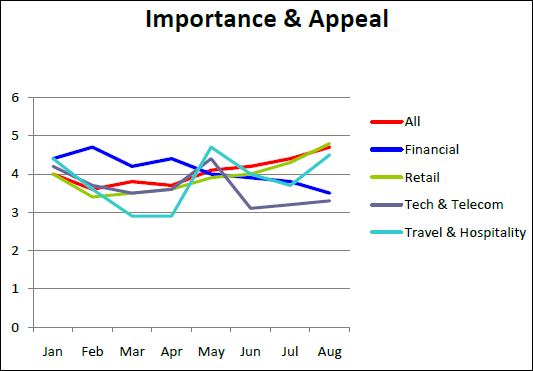
The Relevancy & Response metric measures the percentage of email that is actually read and engaged with. Coming out on top with a 34% read rate, not surprisingly, were the communications of financial institutions, who often send out critical and time sensitive correspondence. Travel and hospitality fared the worst, which was only able to garner an 18% read rate from their target consumers.
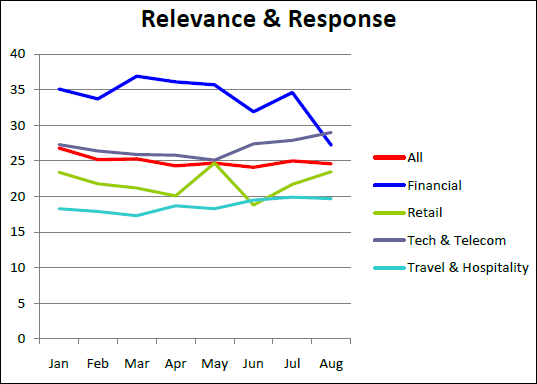
Finally, contact frequency and deliverability can be an important metric for comparing your campaign performance with competitors. In addition, it can act as a source of discovery for any disconnect that may occur between the number of communications sent versus the number of emails found in a target consumer’s inbox. Here, retail and travel marketers come out on top, demonstrating a much higher message velocity of 4.8 and 3.7 messages a month respectively. Financial and technology communications, who as mentioned before both command a high read rate, also tended to be distributed the least amount per month, with only 2 and 2.6 emails on average being delivered to their intended target.
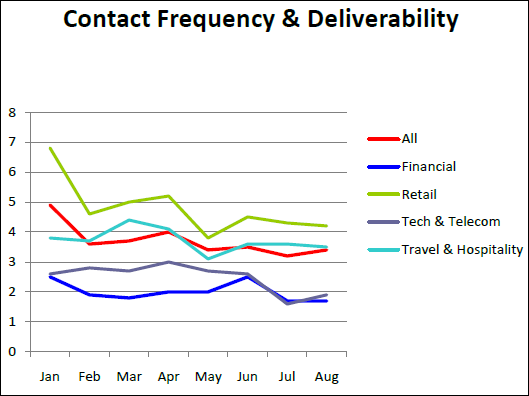
Multiple factors go in to creating and sustaining a successful email marketing campaign, and Pivotal Veracity’s report only stands to strongly reinforce this point. No longer can content alone attract and retain the interest of your target consumers. Instead, strategic distribution, time relevancy, and frequency of communication all play an increasingly important role in triggering desired consumer response and boosting ROI.





